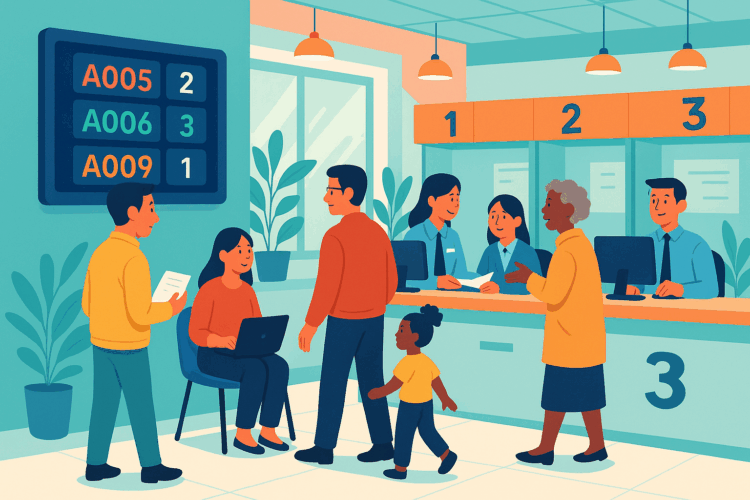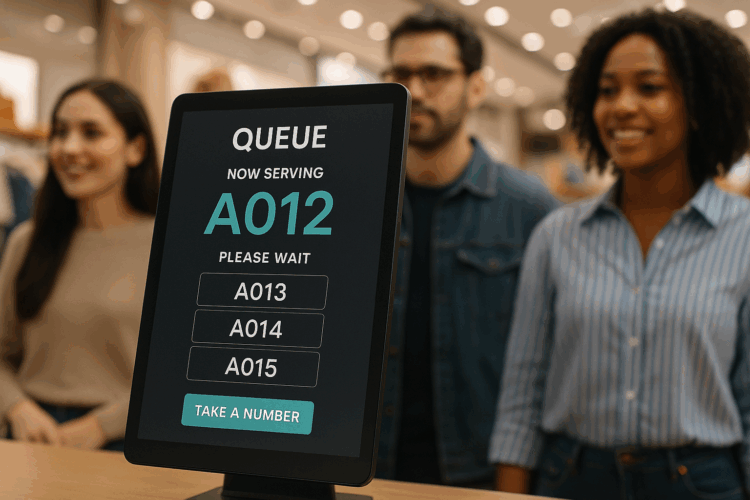
In an age where convenience and speed rule, waiting has become a point of friction for both customers and businesses. From the busy retail location to the busy hospital or government services bureau, lines are an unavoidable part of the service experience. They can create frustration, reduced efficiency, and damage to a business’s reputation if not properly managed.
This is where intelligent queue management comes in. It’s not just about lining up something; it’s about changing the whole waiting experience. By tackling typical problems head-on, companies can not only decrease wait times but also make the waiting experience more enjoyable and productive for all. Below are ten of the most common queue management issues and effective techniques for solving them.
- The Problem of Unpredictable Customer Flow
One of the biggest challenges that companies encounter is uncertainty in customer arrivals. There are some hours when it is quiet with idle staff, and then some other hours with a burst of customers, which creates lengthy queues and overstretched employees. This “feast or famine” situation complicates resource allocation and may lead to burnout among employees during high-demand periods.
How to Overcome It:
The solution lies in shifting from a reactive to a proactive approach. Advanced queue management systems rely on data analytics to monitor and forecast customer traffic flows. Historical data can be analyzed to determine a company’s peak hours, days, and seasons. Such knowledge enables managers to schedule personnel and allocate resources more efficiently, guaranteeing adequate staff and service points at peak times. Strong cloud based queue management system can deliver real-time dashboards that reflect the present queue status, enabling employees to make prompt, intelligent decisions and extend new service counters when required.
- Long and Frustrating Wait Times
The perception of a long wait can be much more annoying than the actual length. When customers are in the dark, they overestimate the amount of time they have been waiting, creating a sense of lost time and increasing frustration. This is a prevalent issue for any high-traffic service setting and is one of the leading reasons for customer dissatisfaction and walkaways.
How to Overcome It:
Transparency is the most effective weapon here. Have a system that makes customers aware in a clear manner about their waiting time. Electronic boards displaying real-time queue position and estimated waiting time are a good beginning. Better still, a contemporary system may enable customers to add themselves to a virtual queue and get updates via SMS or a mobile app. This allows them to wait at ease, possibly by checking your store or resting outdoors, and arrive at the service desk spot on. This strategy turns wasteful waiting into a better, more controllable experience.
- Ineffective Staff Deployment
Inefficient queue management tends to result in misallocation of resources. Some agents may be under an excessive workload, while others may do very little. This creates a bottleneck at one end and idle resources at the other, hurting both speed of service and employee morale. When employees are perpetually pressured to deal with a disorganized line, their attention becomes centered on getting people processed, rather than delivering quality service, which can lead to errors and an impersonal experience.
How to overcome it:
A good queue management solution gives you a picture of the individual agent performance and service times. These statistics enable managers to see which service points are most productive and where the delays lie. Through knowledge of these statistics, you can train employees on certain services and deploy them more efficiently according to demand. For instance, during a high-demand period for a particular service, you can route additional agents to serve that particular queue so that the flow is smooth and services are improved.
- The Problem of Disconnected Systems
Most companies are still using a combination of paper tickets, manual systems, and siloed digital tools. Not being integrated can lead to serious issues. For example, a customer booking an appointment in advance online can still need to wait in a physical queue to check in, negating the pre-booking exercise. Such a fragmented experience is confusing to customers and wasteful to employees.
How to Overcome It:
The key is to implement a single system that unifies all the elements of queue and appointment management. An integrated system can marry online appointment scheduling, virtual queuing, and in-person check-in into one harmonious process. This way, all customers, no matter how they initiated their journey, are processed through one system, resulting in a uniform and streamlined experience.
- Challenging to Measure Performance
If you can’t measure it, you can’t improve it. Without an effective queue management system in place, it is almost impossible to accurately measure key metrics. How many customers walked away from the line? What’s the average wait time? Which service is the slowest? Not having this information puts managers in the dark, and strategic improvements become a matter of luck instead of data-driven decisions.
How to Overcome It:
A contemporary queue management system has robust reporting and analytics capabilities. These allow tracking of all elements of the queue from the time a customer enters to being served. All this information gives valuable insights into customer behavior, traffic times, agent performance, as well as service bottlenecks. By keeping an eye on these reports from time to time, companies can make decisions about improving their operations and customer experience.
- Ineffective Management of Various Service Demands
Not everyone is the same customer, and not all services are identical. A single line for each category of service, be it a straightforward information inquiry or a multifaceted transaction, results in discriminatory waits and disorientation. A person seeking simple information may be held up behind someone requiring a lengthy inquiry, resulting in wasted time for all the people involved.
How to Overcome It:
Use a segmented queuing system. This can be achieved by having customers specify their type of service at check-in. For instance, a bank could have different lines for deposits, account queries, and loans. This allows the customer to be sent to the appropriate service agent from the beginning, reduces waiting times, and guarantees that they get the expert attention they require. Qwaiton provides solutions that enable companies to deal with several queues seamlessly, sending customers to the appropriate place and individual.
- Ineffective Customer Communication
Lack of proactive, clear communication is the biggest cause of customer worry. If a customer doesn’t know where to go, what to do, or how long they will have to wait, they feel lost and not taken care of. This can be as mundane as not having a clear display of their position in line or as complicated as an employee not being able to give a reasonable service schedule.
How to Overcome It:
Employ multiple communication channels. Along with digital signage, send customers SMS messages or mobile app notifications. These notifications can verify their position within the line, give them updates on the duration of their wait, and alert them when it’s their turn. By keeping customers posted at every point, you earn their trust and minimize their perceived wait time, so the overall experience feels more respectful of their time.
- The Expense of Physical Infrastructure
Older queuing systems tend to need massive physical hardware, including servers, cabling, and clunky ticketing machines. This can be a huge initial outlay and introduces a layer of maintenance and technical support that few businesses are prepared to cope with. Upgrading these systems tends to be costly and time-consuming.
How to Overcome It:
Embracing a cloud based queue management system eliminates the need for expensive, on-premise hardware. The system is hosted on the internet, accessible from any device with a web browser. This not only lowers the initial cost but also simplifies maintenance, as updates and security protocols are handled by the service provider. The subscription-based model allows for greater flexibility and scalability, making it easy to add new locations or features as your business grows.
- Inability to Personalize the Customer Experience
A first-come, first-served, one-size-fits-all approach ignores the value of a personalized experience by treating all customers as the same. Businesses are losing out on an opportunity to capture data that can be used to deliver a more personalized service. A return customer or a VIP customer may not be given the VIP treatment they would have liked because the system doesn’t know how to tell them apart.
How to Overcome It:
Integrate your queue management system with your customer relationship management (CRM) software. As a customer checks in, his or her profile may automatically be accessed by the service representative. This gives personnel valuable insight into their history, preferences, and past interactions. This information enables personnel to address the customer by name and give a service that is not merely efficient but also thoughtful and personal.
- The Problem of Remote and Virtual Queuing
Today’s customer experience does not exist in one place. Customers might wish to enter a queue from their home, from inside their car, or when they are shopping somewhere else in a mall. Not providing these alternatives is losing a customer before they get to your doorstep.
How to Overcome It:
Use a virtual queuing system where customers can join the line from their mobile phone, a QR code, or an online platform. It provides them with an option to wait from wherever they prefer without having to wait in a physical line. When it is their turn, there will be an alert on their phone telling them to proceed to the service desk. This methodology allows for a smooth, hassle-free experience that honors the customer’s time and provides a sense of agency over the visit.
In short, queue management is a key aspect of the broader customer experience. By recognizing and resolving these typical issues with intelligent, technology-based solutions, organizations are able to enhance efficiency as well as establish a reputation for being customer-focused and innovative. Solutions such as Qwaiton exist to assist you in addressing these problems, transforming the ordeal of waiting into a potential for a better service experience.



